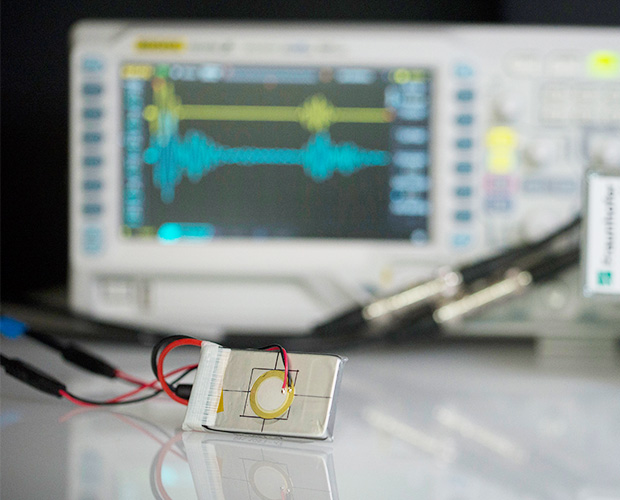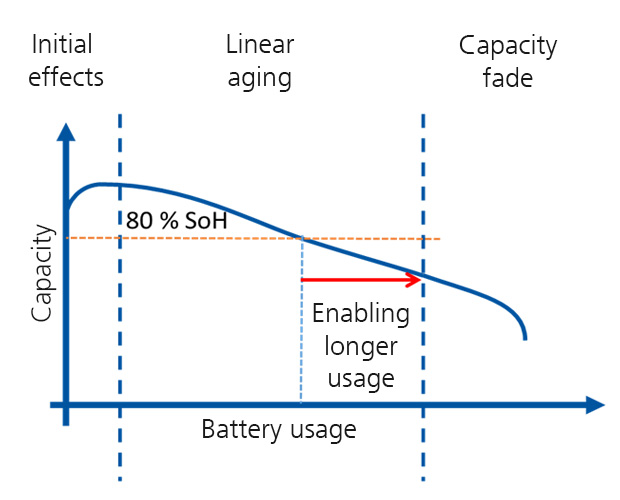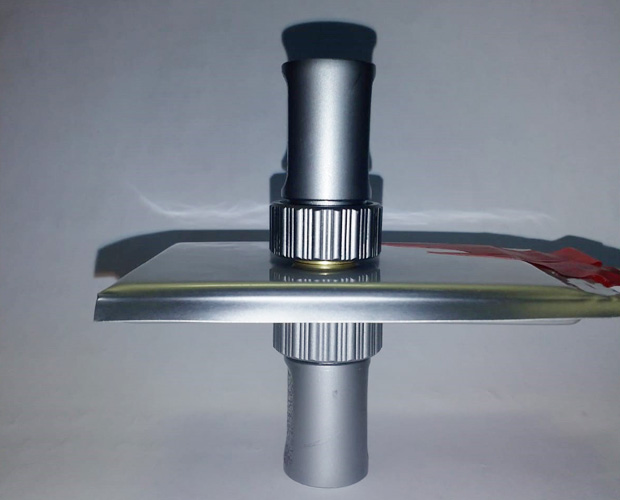MADAM4Life - Mechanical aging diagnostics with strain gauges, dilation, pressure, acoustics, and modal analysis for lifetime prediction

Battery electrified vehicles (BEVs) are intended to have a running performance and reliability comparable to today's cars with internal combustion. The key for achieving these targets is the battery system. Today, when the battery system reaches 70% to 80% of its initial capacity (State-of-Health, SoH), it is considered as no longer reliable for the use in BEVs. It has reached its end of life and is replaced. Closely linked to this SoH is the transition from linear to non-linear aging of lithium-ion batteries (LIBs) leading to an unpredictable fade of the available capacity, significant increase in internal resistance, and thus, the performance of the battery. However, this fade in performance can also occur at SoHs < 70-80%. There are various aging mechanisms contributing to the declining battery performance, which do not directly correlate with the SoH and are not adequately detected with today’s monitoring of only few parameters such as temperature and electrical parameters, to estimate the remaining battery lifetime.
The joint project MADAM4Life aims to close this gap. Different non-invasive and non-destructive mechanical measurement techniques are applied for operando monitoring LIB cells for detection of different cell states such as State-of-Charge (SoC), and aging processes in LIBs during battery operation. Depending on the cell geometry, innovative methods are developed and applied such as monitoring of cell internal pressure and cell expansion for cylindrical cells, and experimental modal and ultrasonic diagnostics for monitoring mechanical material parameters for pouch cells. These diagnosis tools will extend today’s battery monitoring by including mechanical-electrochemical interactions to achieve a higher accuracy in the determination of e.g. the SoH and a data-based optimization of the battery management system (BMS) for an improved prognosis of remaining useful battery life. The intention is to extend operational life of batteries in BEVs and other performance-driven applications, lowering the carbon footprint and the acceptance of BEVs in the transport sector.
These diagnostic methods are intended to extend today’s determination of the condition of LIBs by means of electrical variables and temperature to include mechanical-electrochemical interactions. In particular, a higher accuracy for determination of the SoH is intended and to enable a data-based optimization for battery management systems (BMS). Such optimization allows for an extension in batteries’ service in vehicles and contributes to lower the carbon footprint and to enhance the acceptance of BEVs in the transport sector.
The findings obtained in MADAM4Life are to be fed back into cell design and production so that mechanical influences can be taken into account right from the start as e.g. for the “Battery Research Factory” umbrella concept of the German Federal Ministry of Education and Research (BMBF). In this way, the development of new materials, their integration into the cell and into new cell concepts is supported right from the start and the technical realization will be accelerated.
The project is part of the Competence Cluster Battery Utilization Concepts (BattNutzung) under the umbrella of the interdisciplinary initiative “greenBattNutzung” and is funded by the Federal Ministry of Education and Research (BMBF), Germany.



